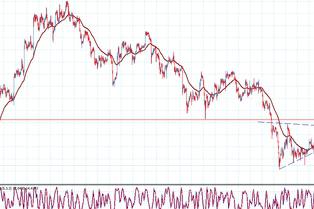Forex For Beginners
Forex, OTC trading on currency differencescourses, is based on the measurement of one monetary unit in another. The market emerged simultaneously with the appearance of paper money, but until the middle of the 19th century it served state treasuries and large commercial banks. By the beginning of the last century on the market came out stockbrokers. In the 1970s, dealer centers appeared that offered a modern principle of lending to customers: about $ 1,000 was required to conclude a deal, and the company provides the missing funds. With the development of information technology and the expansion of participants, the necessary minimum has dropped to 100, in some companies to $ 20. The modern form of FOREX acquired in the 1990s. Contrary to simplicity, seems a scam or the most complex cocktail of psychology with mathematics. However, it is much easier to start trading than it seems. An accurate understanding of several
moments.
The first step is to choose a dealer, in other wordsa company that provides access to the FOREX market. It is important to check the reliability of the company on the reviews on the forums of traders. The second point, the comfort of working with the company: the convenience of the trading platform, the size of the minimum deposit, ways of replenishing the account and withdrawing profits. It is important to read the agreement and related documents. The requirements to keep open positions constantly, the vagueness of wording and the promise of a 100% profit are the first signs of fraud. Signs of stability: the control of the Commission for regulating the relations of financial market participants (KROUFR), the receipt and payment through the payment systems operating in Russia, the minimum of negative feedback on the forums of traders and work on the domestic market for more than 15 years. Before making money for the deposit (real account), practice on the demo. It is trading in virtual money at real quotes. Forex for beginners includes simple rules:
1) Try to avoid transactions 15 minutes before and after the news. Look at the graph, analyze what is happening. Make your predictions, note the expected price movement.
2) Having opened the terminal, make your forecast for the day. Determine the levels of maximum rise and fall of quotations, possible stops during the day.
3) After drawing up the forecast, wait an hour, no matter how attractive the movements of quotations might seem. Analyze your forecast, because the market follows any theory less than a third of trading time.
The basis for a quick reading of the chart is a quotation,the expression of the value of one currency in another. Consists of two parts. To the left, the symbolic part is written briefly: what currency is valued in what. Currencies are denoted by three, less often by four capital letters of the English alphabet. The first two indicate the country: US - USA, JP - Japan, GB - United Kingdom. The latter means the currency: D-dollar, Y-yen, P-pound. respectively.
For example, the EUR / GBP symbol denotes an estimatethe cost of the euro in the English pound. Next, a four- or five-digit number that expresses the cost is indicated. Full EUR / USD quotation: 1.203 means: 1 000 euros is worth 1203 US dollars. Quotations expressing the value of the currency in US dollars are called direct. The expression of the value of the US dollar in another currency is called the reverse quote, one of the common examples of USD / CAD. A cross-rate is called a quotation devoid of the expression of the value of the currency in the US dollar. Quotes have 2 prices: Ask, or sell, and Bid, purchasing. The difference between them, the spread, the net profit of the dealer. When buying a currency (By), the transaction opens at the Bid price and closes when Ask reaches. The deal for sale is opened at Ask price and is closed by Bid.
Undoubtedly, trading on FOREX is simple. However, novice traders should set a daily wage limit and leave the market contrary to expected profits. Caution helps to maintain and increase capital.






